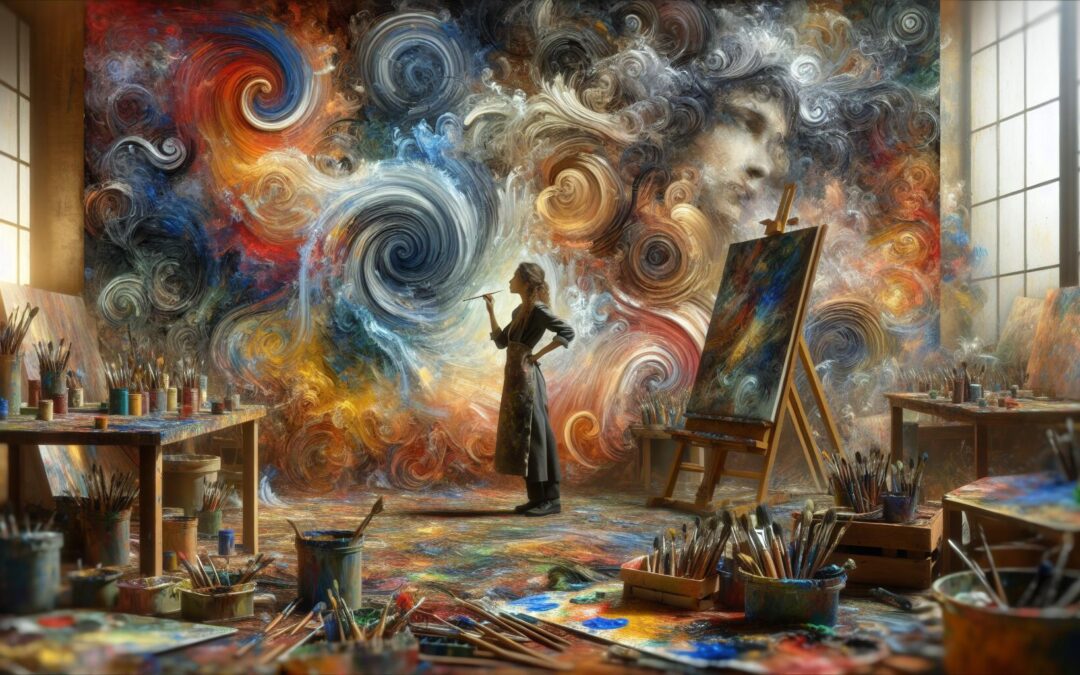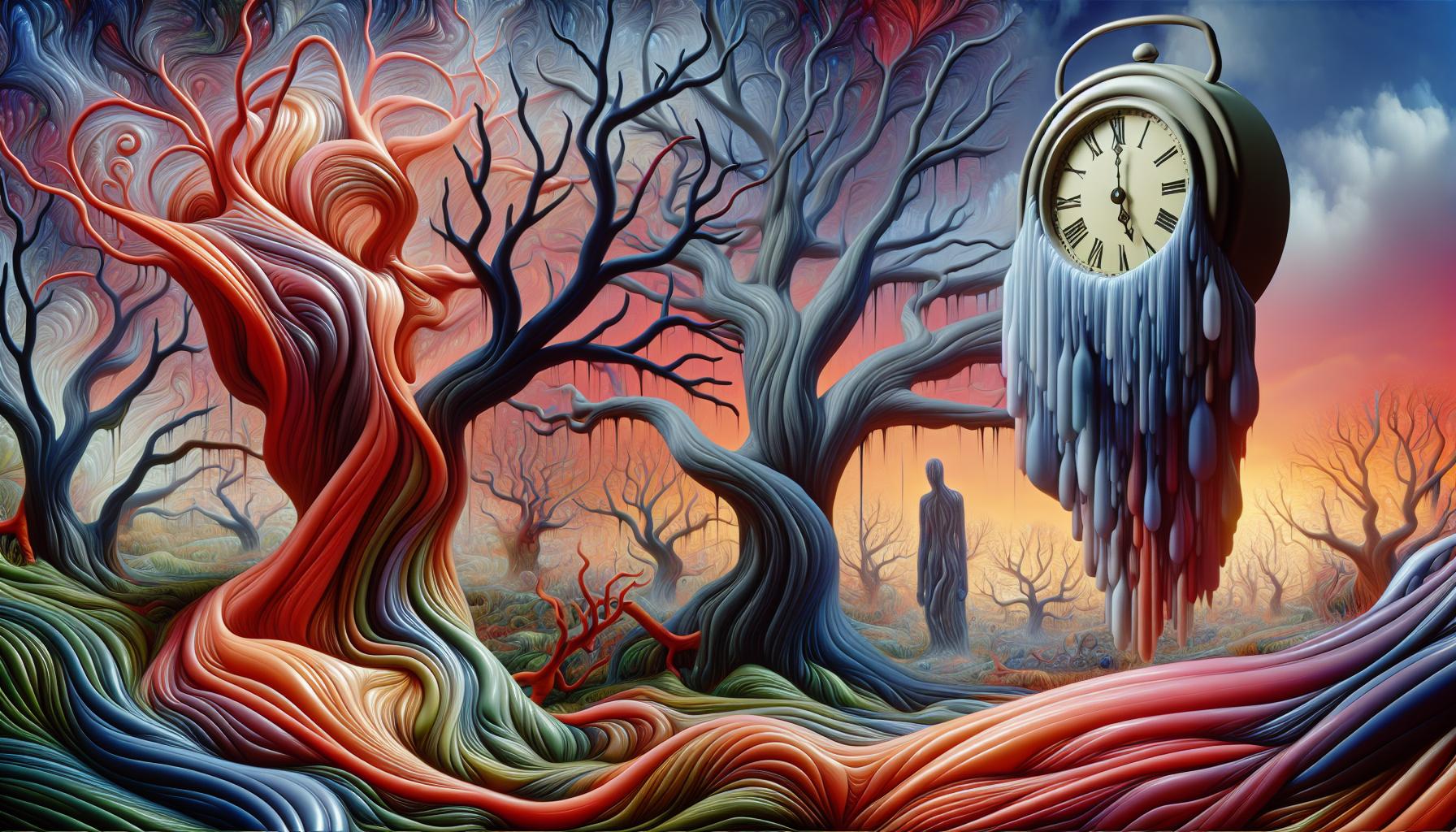The 20th century transformed the art world, giving rise to movements that challenged traditional norms and celebrated individual expression. Among these, several art movements stood out for prioritizing emotion over form. Artists sought to capture the raw essence of human experience, often breaking away from realistic representation to convey deeper feelings. From the passionate strokes of Abstract Expressionism to the vibrant colors of Fauvism, these movements reshaped the way art is perceived and created. By focusing on emotional impact rather than strict adherence to form, they invited viewers to engage with their work on a visceral level. This exploration of emotion continues to influence contemporary art today, making it essential to understand the legacy of these groundbreaking movements.
Which of These 20th Century Art Movements Emphasized Emotion Over From
Expressionism emerged in the early 20th century as an art movement that prioritized emotional experience over physical representation. This movement sought to convey profound feelings, often through distorted forms and vibrant colors.
Key Characteristics
- Emotional Intensity: Artworks possess strong emotional content, often expressing feelings of anxiety, despair, or joy.
- Distorted Forms: Artists manipulate proportions and shapes to enhance the emotional response, moving away from realism.
- Vibrant Colors: Bold and non-naturalistic colors dominate the palette, reflecting emotional states rather than real-life appearances.
- Individual Perspective: Personal interpretations of reality shine through, showcasing each artist’s unique viewpoint on human experience.
- Subjective Reality: Focus shifts from objective representation to subjective sensations, emphasizing personal perception over external truth.
- Edvard Munch: Known for “The Scream,” Munch’s work exemplifies emotional agony and existential dread.
- Egmont Arens: Explored themes of spirituality and alienation through intense color contrasts and dynamic compositions.
- Wassily Kandinsky: Pioneered abstract forms, believing colors could evoke spiritual responses and deep emotional resonance.
- Franz Marc: Used bright colors and geometric shapes to express nature’s emotional essence, often portraying animals symbolically.
- Oscar Kokoschka: Developed a unique, expressive style that conveyed raw emotion and psychological depth, particularly in portraiture.
Surrealism
Surrealism emerged in the early 20th century, emphasizing the unconscious mind’s emotions over traditional artistic forms. Artists sought to unlock deeper layers of thought, crafting works that challenged perceptions of reality.
Emotional Impact
Surrealism aimed to evoke profound emotional responses by tapping into dreams and the subconscious. Visual representations often included fantastical imagery, irrational juxtapositions, and bizarre scenes, stimulating feelings of awe, confusion, and introspection. Salvador Dalí’s “The Persistence of Memory” exemplifies this emotional depth, blending dream and reality to provoke thought about time and existence. René Magritte, through works like “The Treachery of Images,” challenged viewers’ perceptions, inviting them to question the nature of reality and their emotional reactions to it.
Innovative Techniques
Surrealist artists employed groundbreaking techniques to express emotional experiences. They utilized automatic drawing to bypass conscious thought, allowing subconscious images to take form. Collage and photomontage also played crucial roles, combining disparate elements to create unexpected meanings. The use of dream logic further enhanced artwork’s emotional effect, allowing for a stream-of-consciousness experience. Max Ernst, through his innovative use of frottage and grattage, created textures that evoked responses tied to memory and emotion. These techniques collectively contributed to surrealism’s unique ability to communicate complex emotional landscapes.
Abstract Expressionism
Abstract Expressionism emerged in the mid-20th century, marking a radical shift towards prioritizing emotional expression over formality in art. This movement conveyed intense personal emotions through abstract forms, significantly influencing modern artistic practices.
Defining Features
- Emotional Intensity: Abstract Expressionism focuses on conveying deep emotions and personal experiences, often reflecting the artist’s inner state.
- Gesture and Brushwork: The movement employs dynamic brushwork and spontaneous gestures, creating a sense of movement and energy within the artwork.
- Large Scale: Many Abstract Expressionist works are oversized, intended to engulf viewers and immerse them in the emotional experience.
- Use of Color: Bold, non-representational color palettes are vital for evoking mood, with colors chosen for their emotional impact rather than their representational quality.
- Non-objectivity: Artists often avoided recognizable subjects, allowing viewers to interpret the work based on their emotional responses rather than preconceived notions of form.
- Surrealism: The exploration of subconscious processes in Surrealism impacted Abstract Expressionist artists, leading them to delve into their emotional depths.
- Eastern Philosophy: Concepts from Zen Buddhism and Taoism encouraged artists to embrace spontaneity, emphasizing the act of creation as a meditative process.
- Existentialism: The philosophical emphasis on individual experience and emotion during the post-war era influenced artists to reflect personal struggles and existential themes in their work.
- American Regionalism: The desire to establish a unique American artistic identity drew on native themes and experiences, prompting a focus on personal narrative and emotional authenticity.
- Automatism: Techniques from automatism inspired artists to create artworks without conscious thought, allowing emotions to guide their artistic process naturally.
Abstract Expressionism solidified itself as a major force in modern art by emphasizing emotion and individual experience, leaving a lasting legacy on the evolution of artistic expression.
Postmodernism
Postmodernism emerged in the latter half of the 20th century, challenging traditional narratives in art. This movement emphasized emotional depth while deconstructing established forms, leading to innovative expressions of human experience.
Emotional Depth
Postmodernism focused on conveying complex emotions through diverse artistic practices. Artists like Cindy Sherman examined identity and self-perception, leading viewers to explore their own emotional landscapes. The use of irony and pastiche allowed for a deeper engagement with themes such as alienation and nostalgia. Notably, Robert Rauschenberg’s combines blurred the line between fine art and everyday objects, evoking a multilayered emotional response by integrating familiar materials and images into his work. Emotional depth in Postmodernism often comes from an exploration of fragmented identities and the socio-political environment, reflecting the complexities of contemporary life.
Deconstruction of Form
Postmodernist artists deconstructed traditional artistic forms and conventions, favoring a more eclectic and pluralistic approach. Key characteristics include a blending of genres, the incorporation of social and political commentary, and the challenge of original authority. Artists fought against the idea of a singular narrative, instead presenting fragmented stories that invite multiple interpretations. For instance, Jean-Michel Basquiat’s approach combined graffiti and fine art, creating a distinctive style that critiques social hierarchies and cultural narratives. This deconstruction allows for the exploration of emotional correlatives within the artwork, as viewers engage with meanings that resist definitive closure.
The 20th century marked a profound shift in the art world as movements focused on emotion rather than form emerged. Artists embraced their inner feelings and experiences, creating works that resonate on a deeply personal level. This emotional emphasis not only transformed artistic expression but also redefined how audiences engage with art today.
By prioritizing emotional depth, these movements paved the way for contemporary artists to explore complex themes and challenge traditional narratives. The legacy of Abstract Expressionism, Expressionism, Surrealism, and Postmodernism continues to inspire new generations, ensuring that the exploration of human emotion remains at the forefront of artistic innovation.


